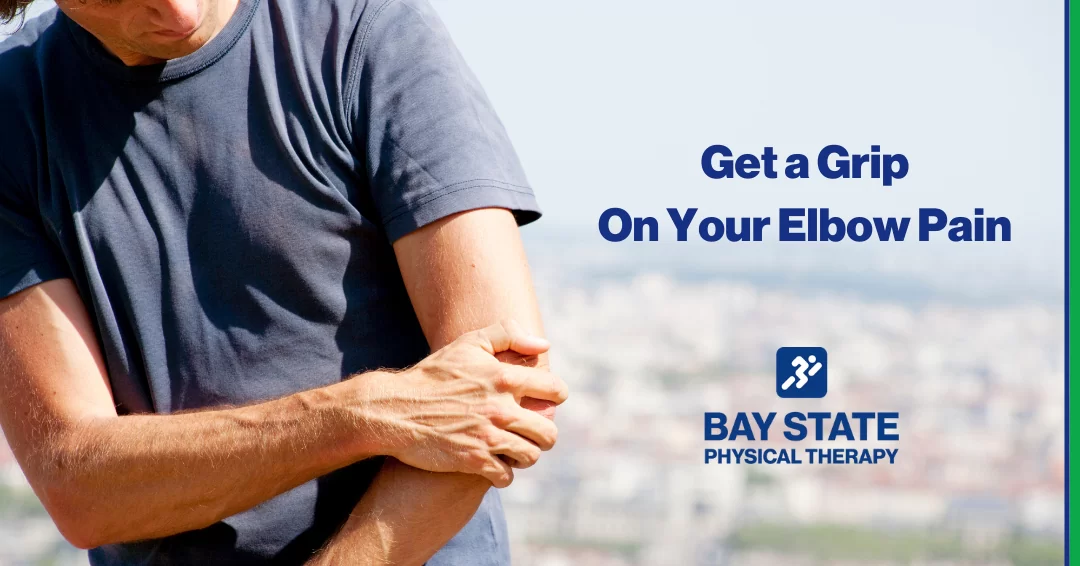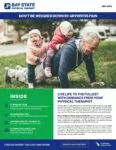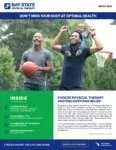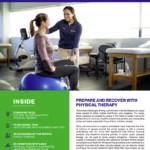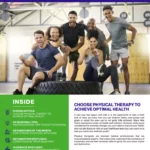Whether you’re an ace on the court or you’ve never picked up a racquet in your life, your elbow pain may be lateral epicondylitis (aka, tennis elbow).
What is Lateral Epicondylitis? (Aka Tennis Elbow)
Tennis elbow is a painful overuse condition of the muscles that allow your wrist and elbow to extend. These muscles attach to the outside (lateral) portion of your elbow on the rounded, boney prominence (epicondyles). These muscles control movement at the wrist and elbow and are also involved in gripping activities and rotational movements of the forearm.
How Tennis Elbow Develops
Tennis elbow is a form of tendinitis, a medical term to describe inflammation or irritation of a tendon. Tendons are connective tissues that attach muscle to bone. When tendons are used repeatedly in the same motion, they become inflamed and painful at the point where they attach to the bone. Tendinitis can occur at any tendon/bone connection in the body, with some of the most common areas of tendinitis occurring at the knee, hip, shoulder, and elbow.
Tennis elbow can be caused by recreational activities, such as tennis or gardening, or from occupations with repetitive motions such as painting, automotive mechanics, or assembly line work.
What Does It Feels Like?
The pain often feels sharp and burning near the elbow and can radiate down into your forearm and wrist. With severe tennis elbow, symptoms can make it difficult to hold objects, even those as light as a cup of water!
Other symptoms can include:
- Stiffness in the elbow, especially when straightening the arm
- Weakness in the forearm, wrist, or hand
- Pain when twisting or bending your arm (for instance, turning a doorknob or opening a jar)
- Swelling of the elbow that can be tender to touch
What Is Golfer’s Elbow?
Both tennis elbow and golfer’s elbow can cause severe discomfort when you grasp items with your hand and when you lift or twist objects. They also have similar causes and respond to similar treatment plans that your physical therapist will create. The difference is where you feel your pain- either the inner area or the outer area of your elbow.
Either condition involves injuries to your forearm’s tendons after overuse or trauma. The tendons attach your forearm muscles to your elbow bone. They work as you grip, lift or twist objects. A weakened tendon means greater stress and can cause pain. The result can be tennis elbow or golfer’s elbow.
Tennis Elbow vs. Golfer’s Elbow: Lateral Epicondylitis vs. Medial Epicondylitis
While the medical term for tennis elbow is ‘lateral epicondylitis,’ the term for golfer’s elbow is ‘medical epicondylitis.’ It’s simple enough to decode these technical terms. “Lateral” is a medical word for “outer,” while “medial” is a medical word for “inner.” In the simplest of terms, the tennis elbow is inflammation on the end of the outer elbow, and a golfer’s elbow is inflammation on the end of the inner elbow.
What’s Next? Ask The Expert
Your physical therapist is an expert in the musculoskeletal system and will help you understand your unique symptoms based on your diagnosis. Don’t let a short-term injury turn chronic in nature. Choose physical therapy today to help you get back on the court or course with less pain and improved function.
How Physical Therapy Can Help
Tennis elbow is a quite common condition that physical therapists treat—reducing pain and improving function through a variety of methods. During a thorough evaluation, your therapist will measure your elbow, wrist, and hand strength as well as your range of motion. They’ll ask you questions about when your pain/symptoms first started. With your long-term goals in mind, they’ll create a customized care plan to reduce your pain through services such as:
Therapeutic Treatments: These may include manual therapy services such as therapeutic massage, instrument-assisted soft tissue management (IASTM), the Graston Technique, or trigger point therapy. Other care options include ultrasound, cold laser therapy, cupping, dry needling, ice massage, and electrical stimulation for pain management, and joint mobilization. These hands-on services will improve blood flow to the impacted tissues and promote healing from within.
Stretching: Full joint and soft tissue mobility is an important aspect of regaining normal function. Your physical therapist will select appropriate stretches for you and teach you how to perform these on your own.
Strengthening: In many cases involving soft tissue injuries, muscle imbalance can heighten discomfort. Muscle imbalance occurs when opposing muscle groups have significantly different levels of strength, which can lead to pain and dysfunction. With tennis elbow, there’s often a strength imbalance in the forearm muscles. Your physical therapist will assess your strength and prescribe exercises uniquely tailored to your body to improve strength and promote a better balance.
Education & Prevention: Conditions such as tennis elbow are completely avoidable, and part of your care plan will include education on how to prevent your pain from returning.
Elbow Pain Relief Is Within Reach
Physical therapists are experts in injury prevention and tissue healing. As you progress through your care and prepare for discharge, the focus of your sessions will be discussing the movements and activities that can aggravate your condition. Your physical therapist will educate you on activity modifications to assist with your daily tasks. Tennis elbow is a pesky problem that can make work and play a challenge. While you may be able to manage the pain initially, ignoring symptoms can lead to prolonged pain. With your trusted physical therapist on your team, you’ll be back on the court before you know it. If elbow pain limits you, contact Bay State Physical Therapy to schedule an evaluation.
To learn more, call your nearest Bay State Physical Therapy location or complete the form below to request an appointment.
Resources:
- https://www.mayoclinic.org/
- https://orthoinfo.aaos.org/
- https://www.medicalnewstoday.com/articles/175848
- https://www.choosept.com/
- https://www.mayoclinic.org/
Tags: elbow pain, tennis elbow, sport, sport injuries, healthy lifestyle

